Before I started gardening, I used to think winter squash referred to the squash that grew over winter.
Only after harvesting my very first “winter” squash did I realize all the pumpkins, hubbards, butternuts, and turbans that arrived at the turn of cool weather actually took three or four months to get there!
Cucurbita maxima, Cucurbita moschata, Cucurbita mixta, and Cucurbita pepo are summer-growing annuals, maturing through the warmer months and storing through the winter (with some varieties even holding into the following spring).
Though you can use them right away (and what’s more soul-soothing than a butternut roasted to sugary sweetness as the weather turns cooler?), you can also save them for two, three, or even six months from now.
Curing your winter squash doesn’t take much more effort than it does to harvest them, and is well worth the extra step.
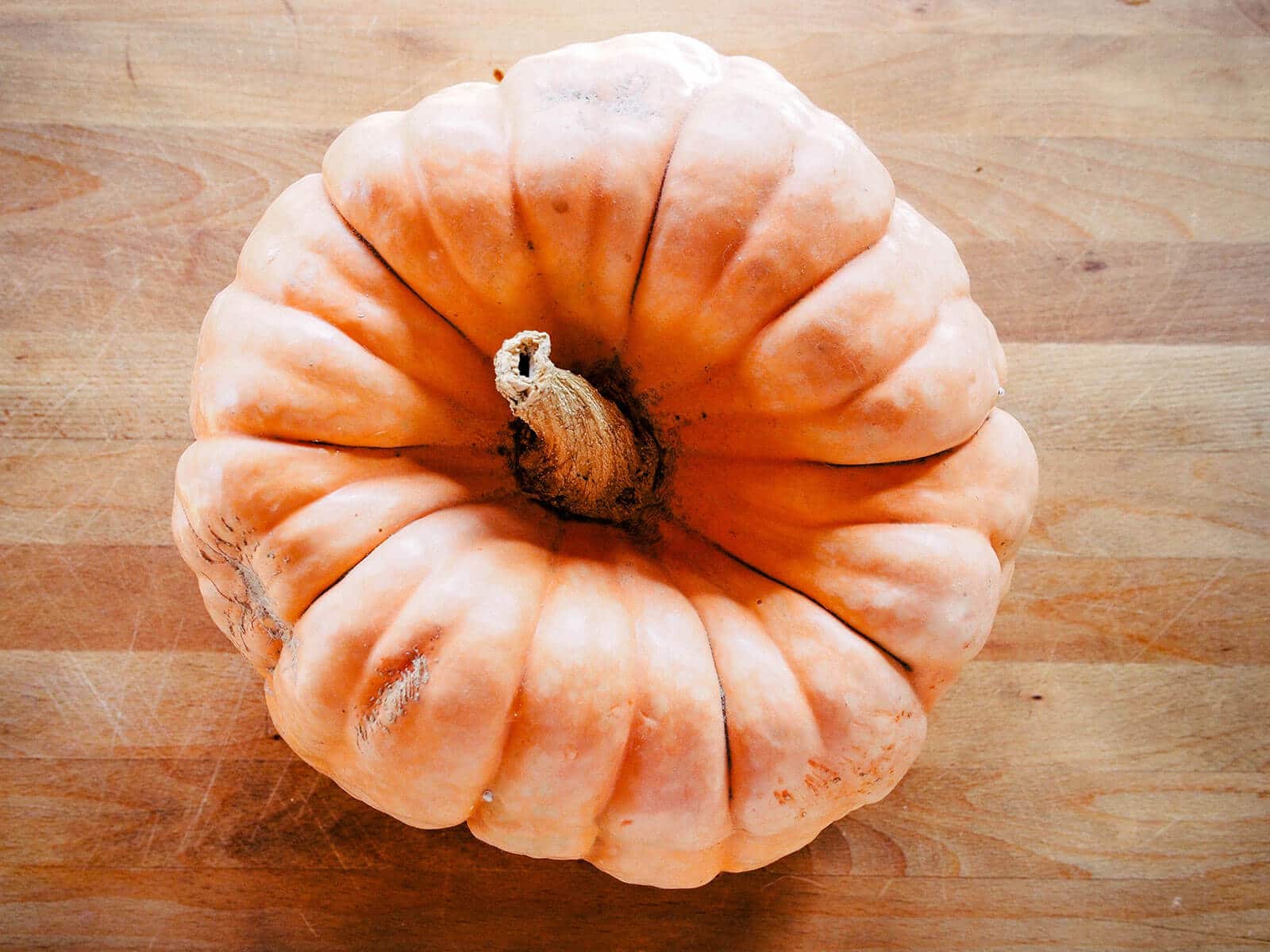
First, what’s the difference between winter squash and summer squash?
Winter squash are the pumpkins, gourds, and tough-skinned varieties you might find in a fall cornucopia.
Spaghetti, butternut, kabocha, turban, Black Futsu, pie pumpkins, and those twisted, warted, creepy-looking varieties you put out for Halloween are all different types of winter squash.
With the exception of acorn and delicata squash (whose skins are soft and edible), winter squash have hard shells that need to be separated from the flesh.
Summer squash, on the other hand, have skins that are tender and full of flavor.
They include zucchini, yellow crookneck, zephyr, cousa, pattypan, and chayote squash. These types of squash are ready for harvest as soon as they reach an inch long, and it’s not uncommon to eat summer squash that still have blossoms attached.
Then there are squash that can fall into either category, depending on when they’re picked.
Zucchino rampicante (also called tromboncino squash or zuchetta) and tatuma (tatume) squash are two common varieties that can be harvested as summer squash and cooked the same way you’d cook zucchini.
If left to mature through the end of summer, however, they can be cured and stored like winter squash. Because their skins have hardened, they’re prepared like butternut squash at this stage.
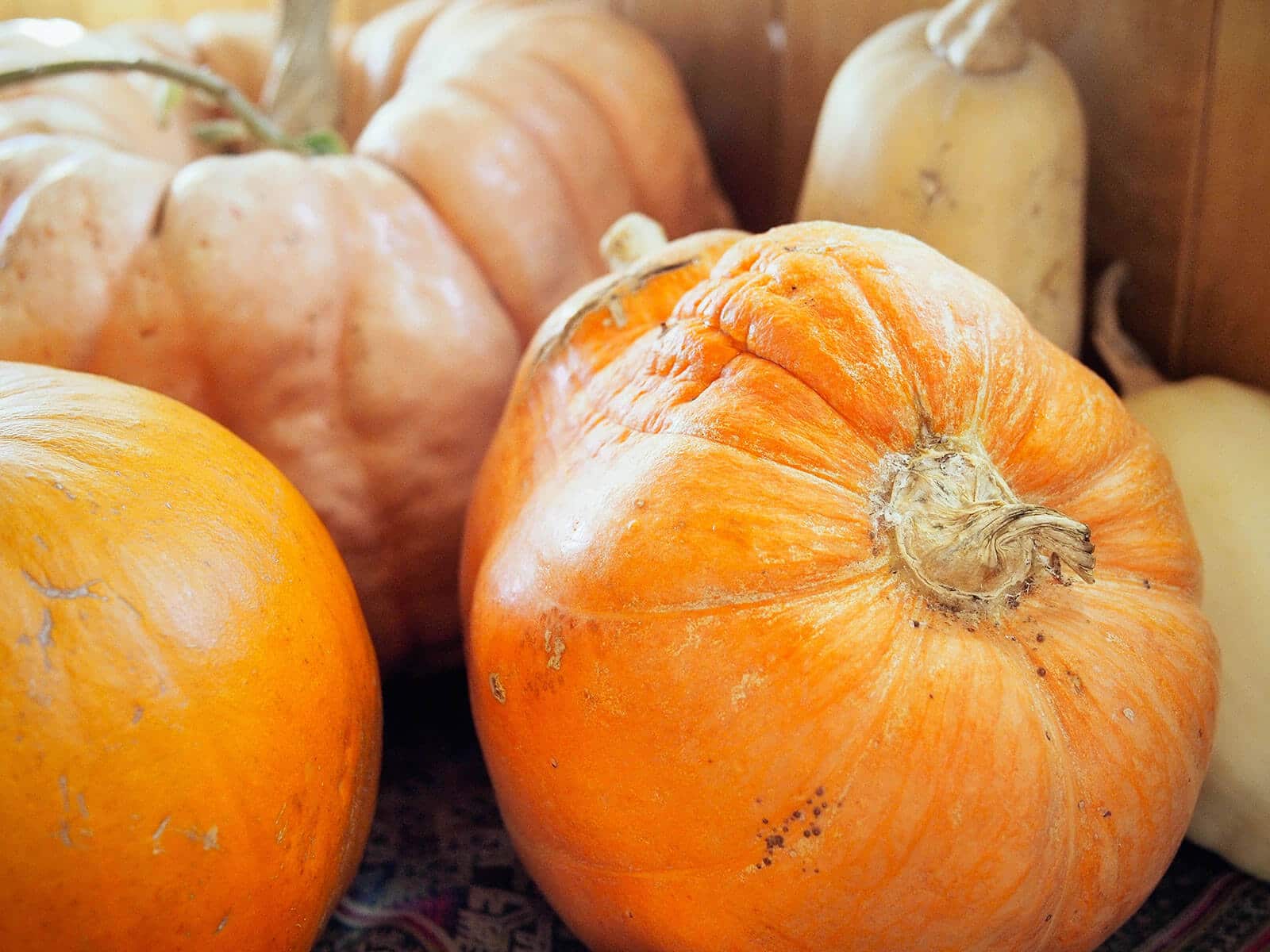
Do you have to cure winter squash?
Technically, you don’t have to cure winter squash. You can pick immature winter squash at any stage of growth and eat it like summer squash, but the flavor of “green” squash won’t be as rich and sweet as fully ripe squash.
Immature winter squash won’t store well either, so they should be refrigerated soon after harvest.

When is the best time to harvest winter squash?
Winter squash are picked at the end of summer (typically from early September to mid October) when their rinds have toughened up, their seeds have fully developed, and their vines have started to wither.
The leaves are the first sign of fruit maturity. Once they turn yellow on their own and the vines look like they’re on their way out (before frost hits), the squash should be fully ripe.
But don’t wait until the first frost!
Squash that have been hit with frost will not ripen or store well.
A tan, cracked, and hardened stem that’s died off is a good clue to look at; so is resistance to the stab of a fingernail.
You might make a slight dent in the skin, but you shouldn’t be able to puncture all the way through the flesh.
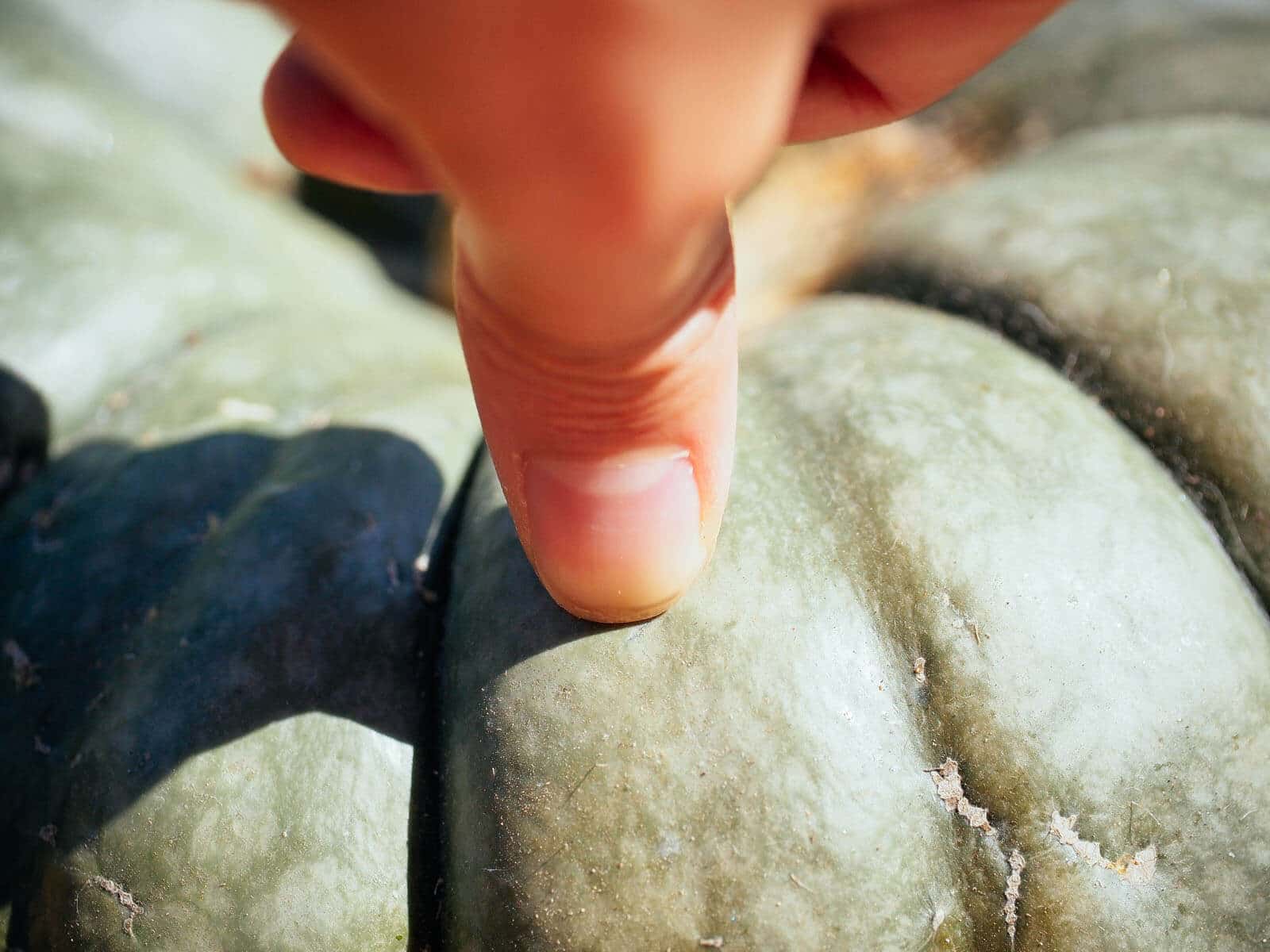
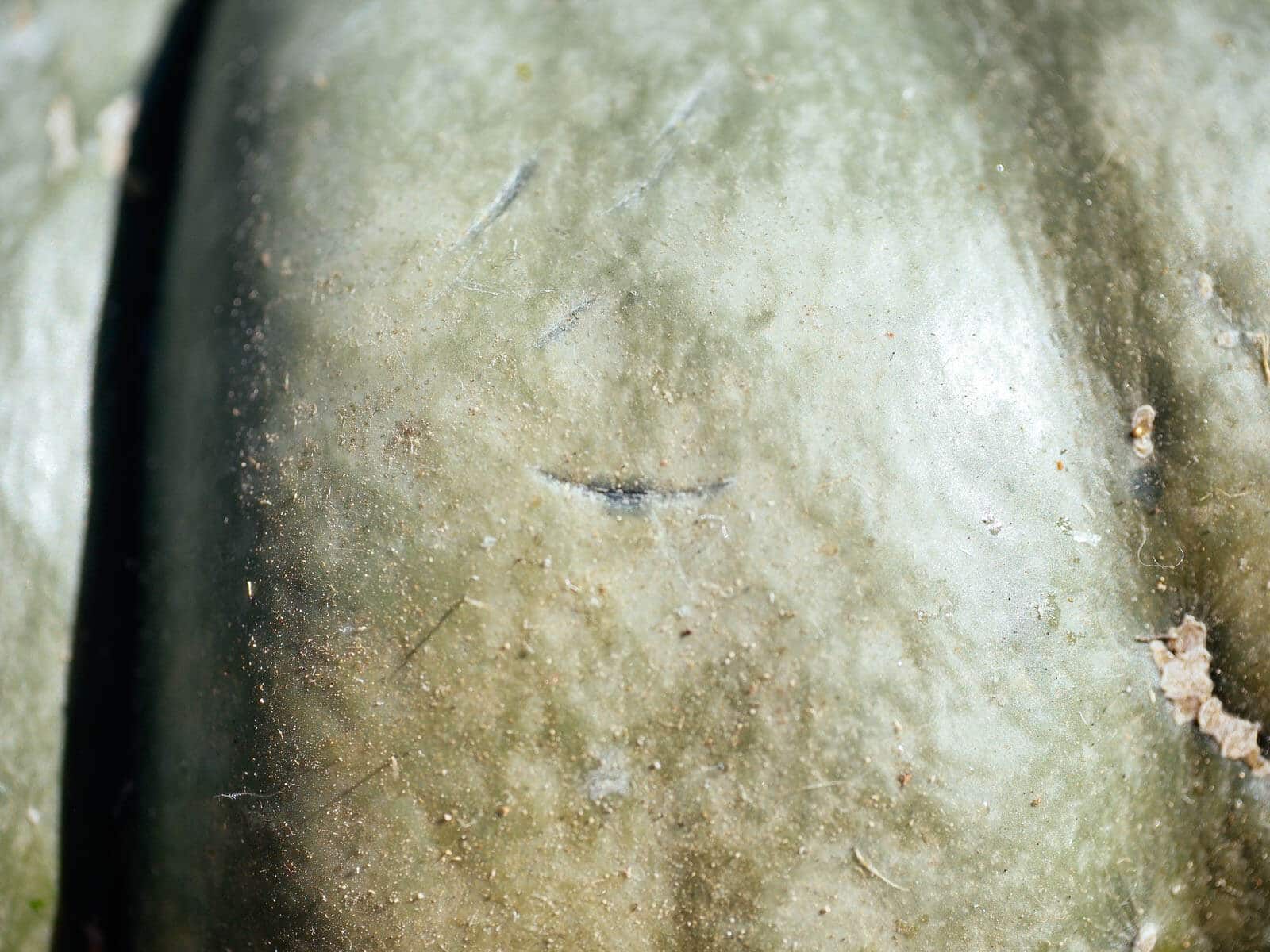
The squash should sound hollow when you give it a good thump with your hand, and the skin’s glossy sheen will give way to a duller tone.
At this stage, the water content of your winter squash is just right for harvest.
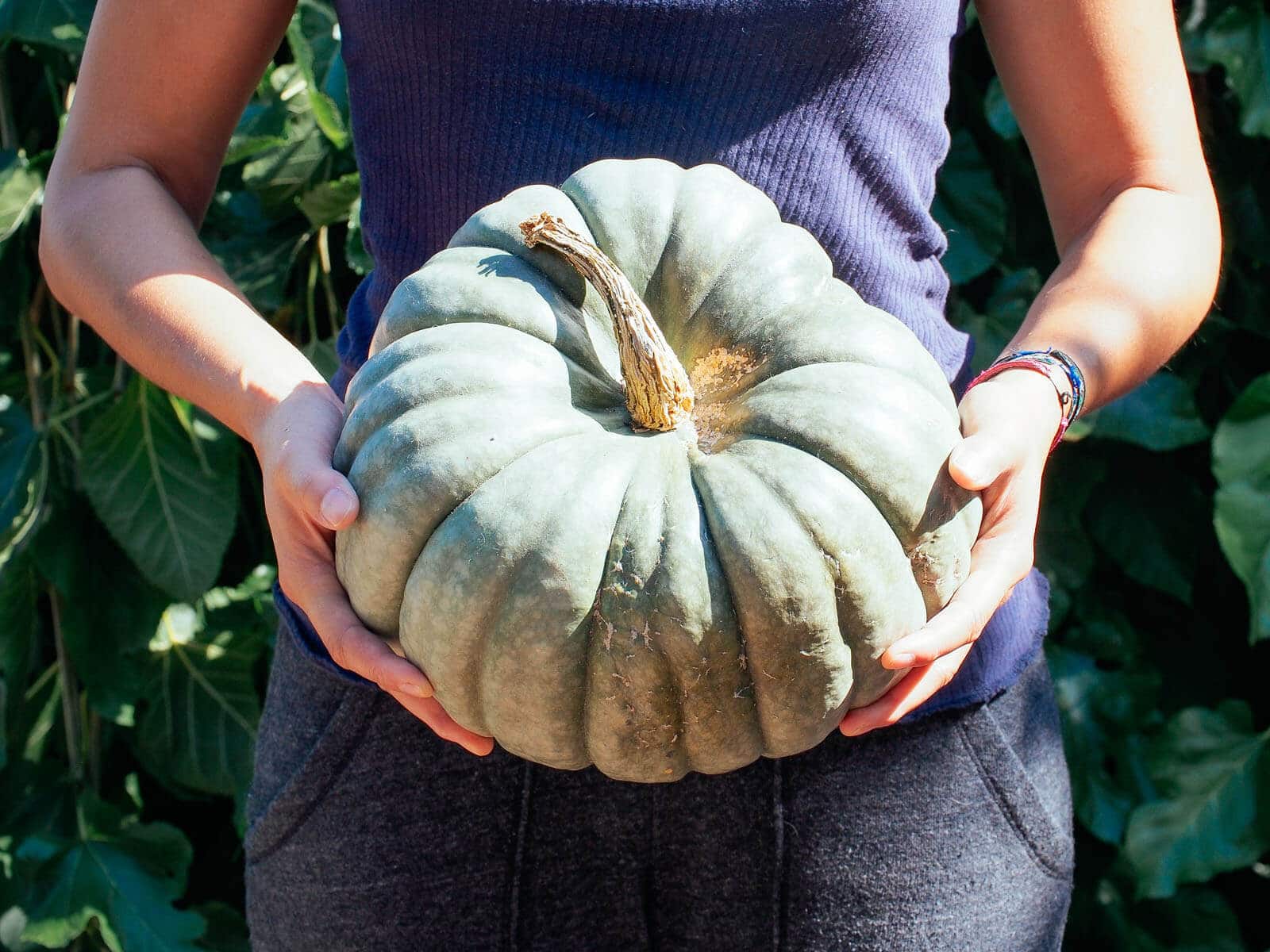
How to cure winter squash for storage
Once your winter squash have fully matured, cut the squash from the plant, leaving at least 3 inches of stem.
The stem is the fruit’s fail-safe seal against rot and disease, so avoid lifting it by the stem and instead hold it from the bottom.
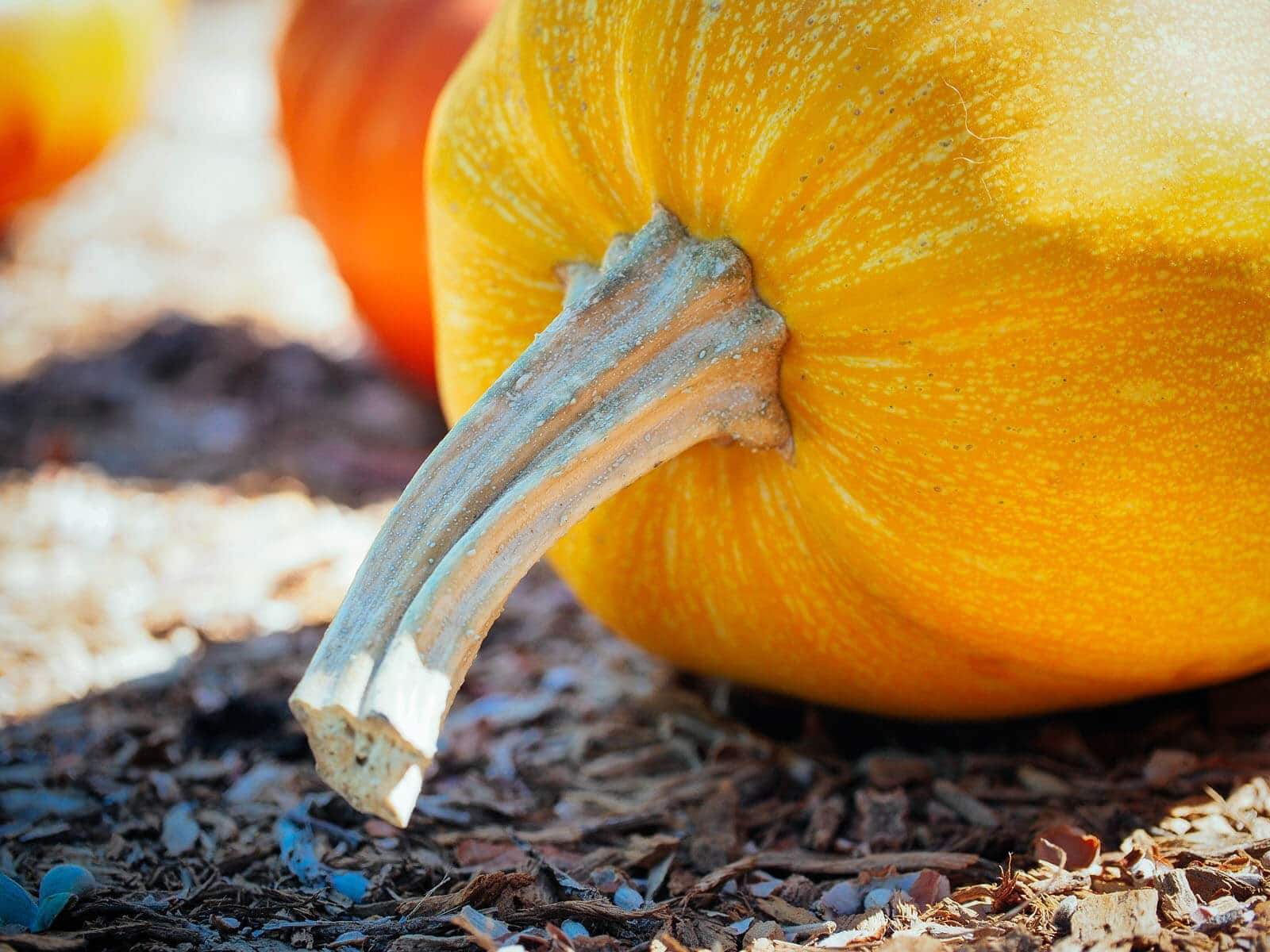
Despite their burly appearance, winter squash actually require a little babying to keep them from spoiling. Treat them gently while their skins continue to toughen up and the sun heals any cuts or cracks that could lead to rotting later.
Squash may develop ground stains on their skin, which indicate where they laid on the ground while growing. These superficial spots are merely discolorations and have no effect on the flesh underneath.
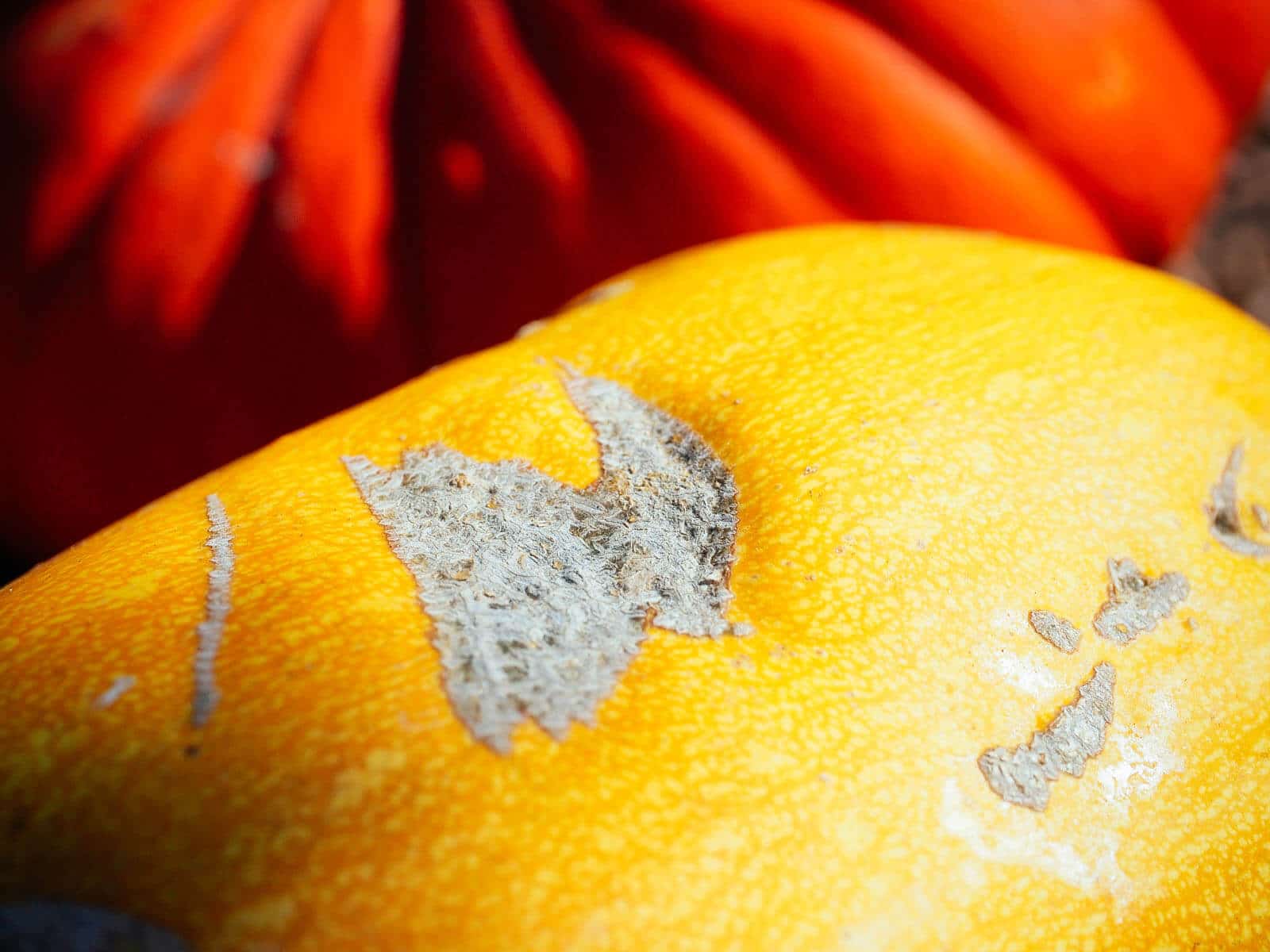
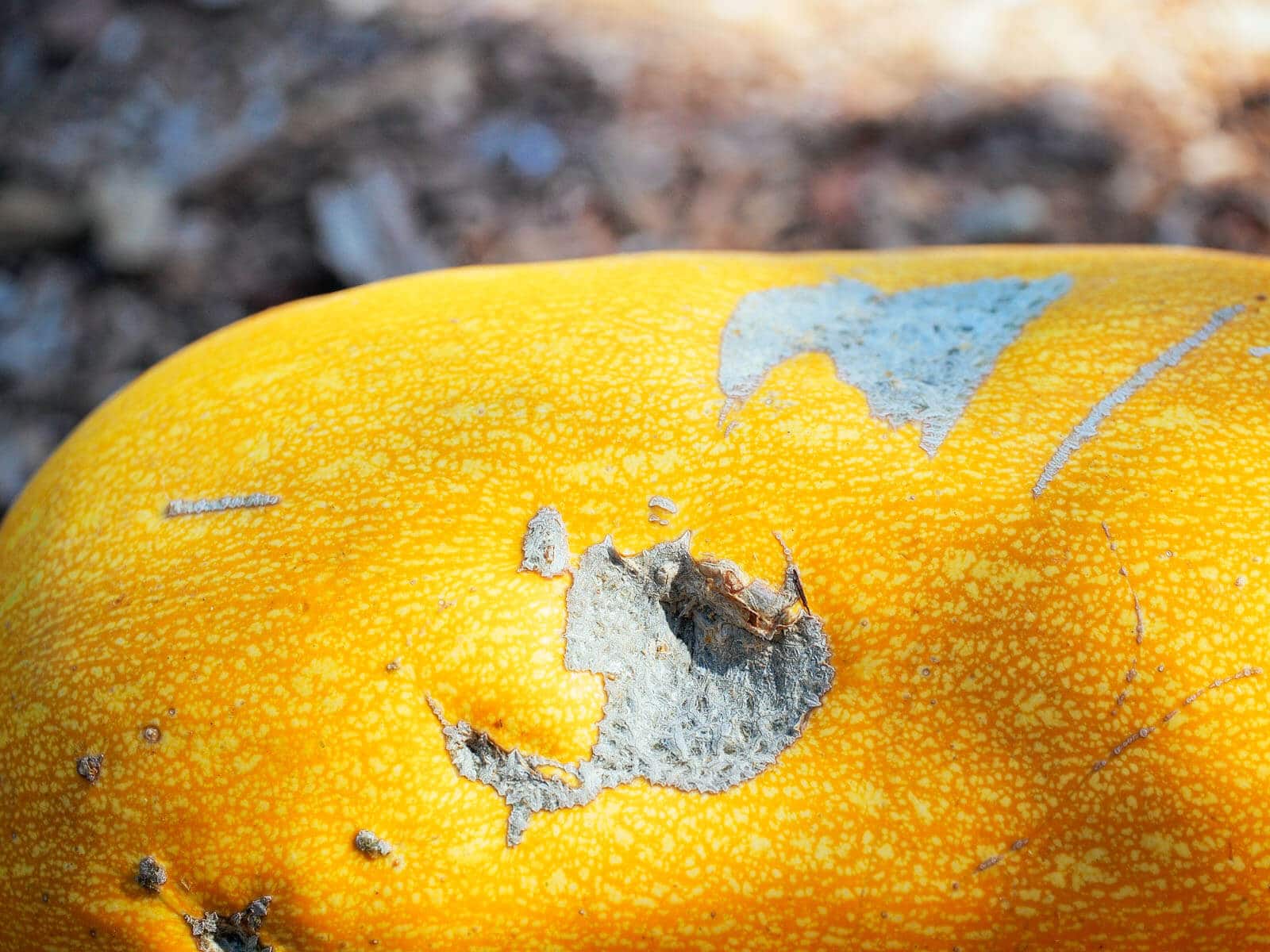
A few minor marks on the surface are generally nothing to worry about, but these are the squash that should eventually be eaten first.
The same goes for squash that might be bruised or broken; they won’t keep well. Remember that any little ding will only get worse in storage and may also affect the quality of the other squash in the pantry.
Once you’ve harvested all your squash, lay them out in the sun in a warm, well-ventilated area (around 80°F to 85°F is ideal).
Mine are simply spread out in the yard, on top of the mulch, where they stay nice and dry and are not in the way of other garden chores. Keep your pumpkins and squash away from any overhead irrigation or areas where water is likely to pool.
Related: A Fall Garden Checklist for Maximizing the Season and Winterizing Your Yard
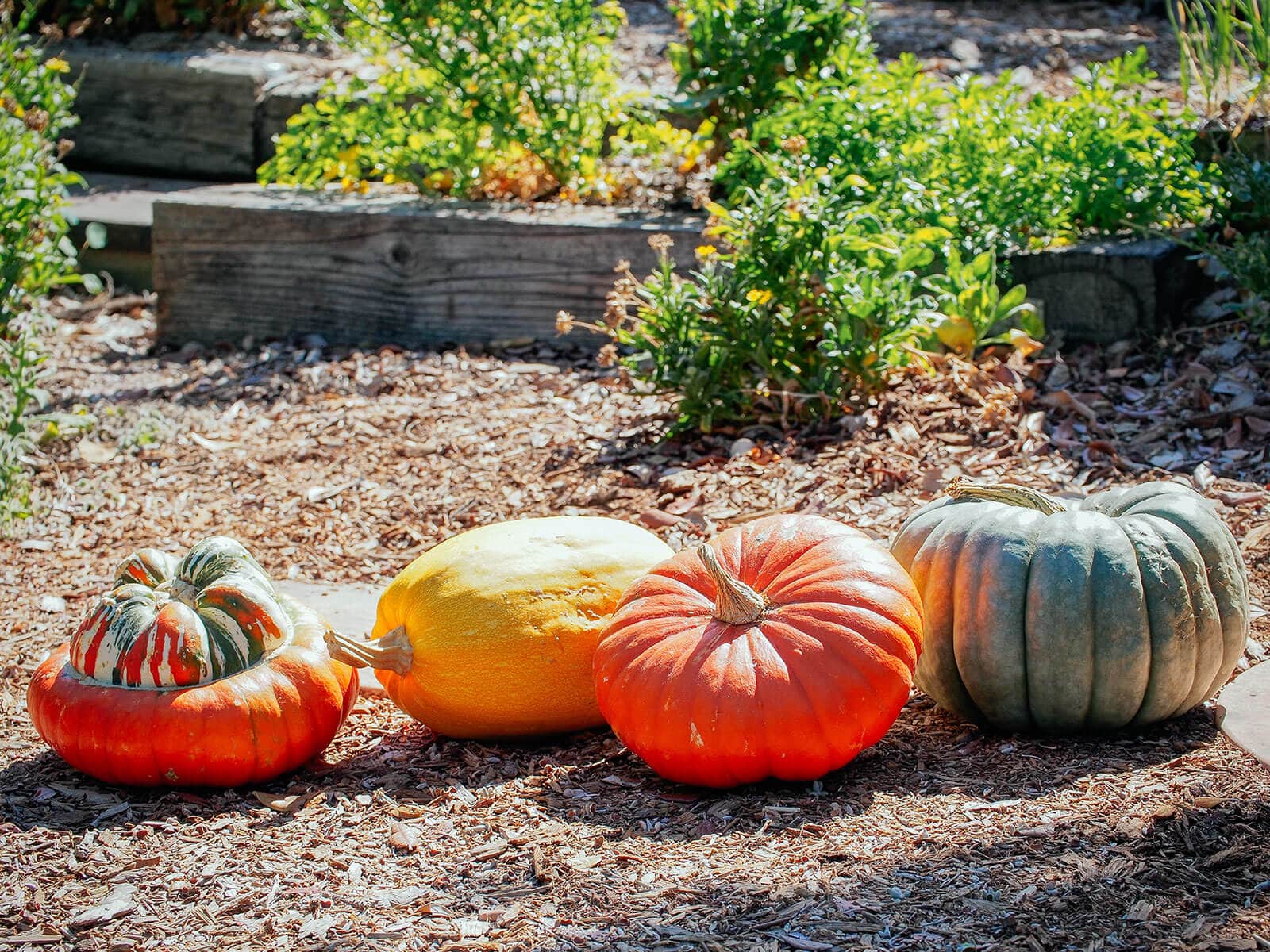
If there’s a threat of rain coming, move them inside to a dry, cozy place like an attic near a sunny window, a sun room, or a greenhouse, or even a sunny windowsill. Just don’t forget about them!
Winter squash need 7 to 14 days of warmth and sunlight to properly cure.
In that time, the fruit continues to “breathe” but as its skin hardens, the rate of respiration (and thus the rate of spoilage) slows down. The harder the skin is, the longer it will keep in storage.
Think of the hardened skin as a protective layer of armor; it makes the squash impervious to mold and bacteria. Curing also concentrates the natural sugars in squash, making them sweeter and richer.
I like to turn my squash over after one week and let the other side soak up some sun for the remaining week. Under cloudy or humid conditions, allow at least two weeks per side.
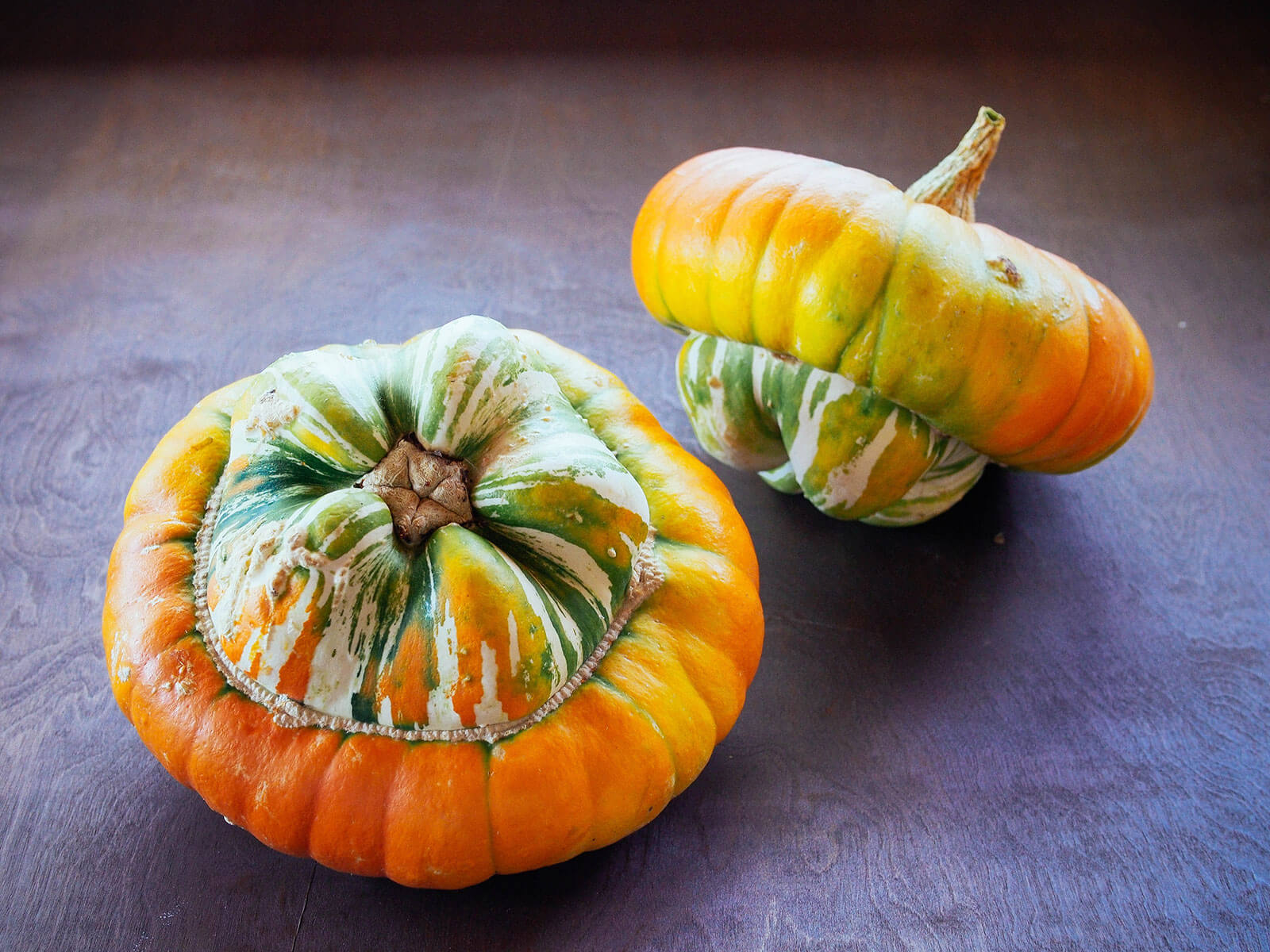
How to store winter squash for peak flavor
Once they’re fully sun-cured, store your squash in a cool, dry, and well-ventilated area with an ambient room temperature below 70°F.
Very cold conditions (anything under 50°F) will shorten storage life.
Don’t just lump all your squash together into a large bin and call it good. Stash them in a single layer on a shelf (preferably not touching each other) with ample air circulation, in a spot where they’re easy to check on throughout the season.
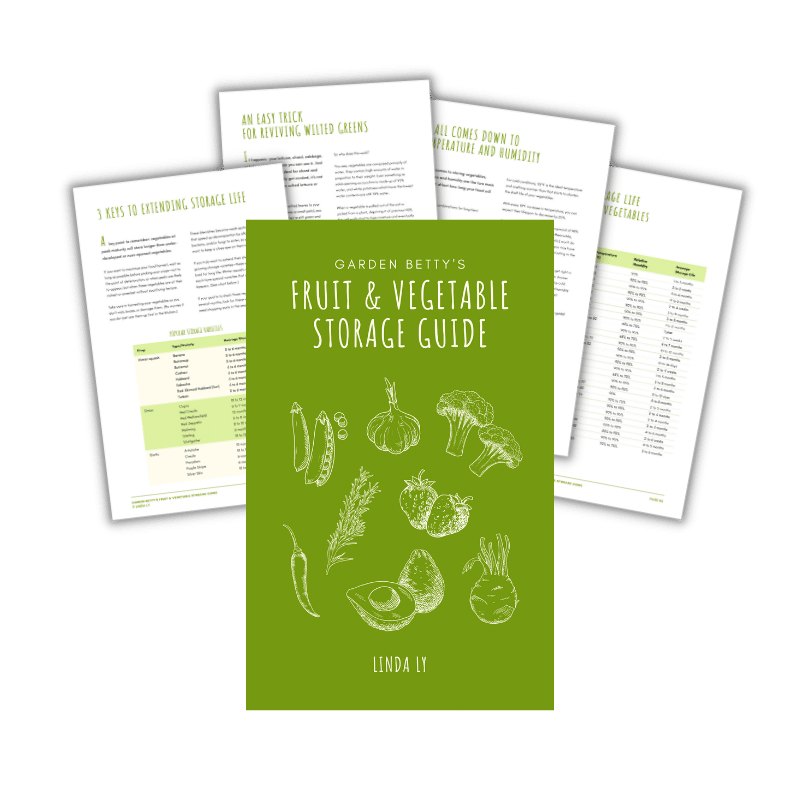
Don’t let good food go to waste!
Download my Fruit & Vegetable Storage Guide for printable charts, helpful tips, and secret tricks for keeping your produce super fresh for as long as possible.
You want to keep an eye out for blemishes and soft spots. If any dark marks begin to appear on the squash, move it away from the other squash and plan to use it up first. Those marks (which resemble water stains) will eventually coalesce and become water-soaked, causing the entire squash to collapse in rot.
Winter Squash Storage Chart
| Squash Variety | Average Shelf Life |
|---|---|
| Acorn (see Note below) | 1 to 2 months |
| Delicata | 2 to 3 months |
| Spaghetti | 2 to 3 months |
| Pumpkin | 2 to 3 months |
| Butternut | 3 to 6 months |
| Buttercup | 3 to 6 months |
| Turban | 3 to 6 months |
| Banana | 3 to 6 months |
| Kabocha | 4 to 6 months |
| Hubbard | 4 to 6 months |
| Red-Skinned Hubbard (Red Kuri) | 4 to 6 months |
| Cushaw | 4 to 6 months |
In general, the harder and thicker the rind, the longer it will store.
Note: Acorn squash is an exception to the curing rule, as it actually declines in quality if left in the sun. It keeps (without curing) in ideal pantry conditions for a month or two at most.
Sometimes I’ll get lucky and a squash will store longer than expected. I love to pull out, say, a hubbard in March—a squash that I’d harvested back in August! With only a couple of winter squash plants, you could be set on soups and roasts until the following spring when the weather finally turns warmer.

Common questions about curing winter squash
How do you ripen immature winter squash?
If winter arrives early and your winter squash are still green on the vine, here’s a simple test to see if they have a chance of surviving: give them a good tap with your hand.
If the fruits feel and sound solid, and have begun to change color, you can harvest them and ripen them indoors in front of a sunny window. Watch them carefully and turn the squash every few days until they reach the proper color for eating. At that point, you can store them in a cool and dry place.
Immature squash that were cured in this way may not last as long as squash that were ripened on the vine, so keep an eye on them and try to use them up within a couple months.
Can you eat the rind of winter squash?
Technically, the rind (or skin) of all winter squash is edible. There’s no danger to consuming it — it’s just a matter of texture and personal preference.
The thicker the skin, the greater chance it has of remaining chewy and tough even after it’s cooked.
That’s why thin-skinned winter squash like red kuri and delicata are culinary darlings: their skins practically melt away after sauteing or take on a pleasantly crisp texture after roasting. You may also have some luck with petite varieties of kabocha or butternut squash, which don’t necessarily need to be peeled.
Should you refrigerate winter squash?
Do not refrigerate winter squash, as it will shorten their lifespan. If they’re well cured, they’ll keep perfectly well in the pantry (and keep longer if the ambient room temperature stays on the cooler side between 60°F and 70°F).
You only need to refrigerate winter squash if it’s been cut or cooked. Download Garden Betty’s Fruit & Vegetable Storage Guide for more helpful tips on storing your produce properly.
This post updated from an article that originally appeared on August 20, 2014.
View the Web Story on curing squash.
















Thanks for this great information. I once read that handling the Skins too much at Harvest was bad for them is this true?
If your family wants to come ski in Salt Lake I have space for you no charge; I’d love to meet you and show you all my garden if you are visiting.
You’re just the greatest! This is so helpful. In all my years of growing squashes, this is the first time I’ve heard of curing squash out in the sun. Question: So I live in Nebraska. I just (today!) bought a bunch of squash and pumpkins from a farm nearby. They had cut a bunch of them today. It is October, and the forecast for the next couple of weeks is in the 60s for the high temps. No more 80-degree temps. Should I still be attempting to cure my squash out in the sun, in those cooler temps? Thanks for your advice!
Thanks you for all
the info John
I live in a cool and cloudy area of the PNW which makes curing squash difficult. Can it be don inside under a grow light in leu of a sunny window?
But what if I’m planning to roast pie pumpkins to freeze the pulp? No need to cure? Thanks!
I just picked about 8 beautiful delicata squash. I did not plant it! It grew from my compost. Yay! I’m unclear on curing delicata squash. Can it or should it be cured like other squash varieties? Or should it just be kept at 55-65 degrees after being picked? Thank you for your advice!
Hi Sandy, I generally bring them in, wash them up and wipe with a weak bleach/water solution. I cure them I my sunny sun room for a couple of weeks and then they go down to my basement where it is a bit cooler. I have had them last for months this way. Delicatas are one of our favorites and we harvested 102 of them yesterday…..and there are still more in the garden waiting for me! I hope you had good luck. God Bless!
How would you cure squash in a northern area where the weather doesn’t get into the 80s anymore any sept/oct harvest time?
lovely thank you
I have zucchini coming out my ears, and need a great recipe to let my family enjoy its taste. HELP and Thanks patty
Hmmm I feel like my kabocha are already cured in the sun properly even though I haven’t cut their vines yet. IS that… is that how it can work? My current plan is just to wait for the temperature to get cold enough to threaten frost, then harvest and store where it’s cool. do I really have to heat them first? Improper storage cost me some pumpkins in the past.
Yes, they need heat and sun to properly cure. Just follow all the steps detailed in this post.
Your squash are stunning! I’m so envious. I moved and no longer have the space to grow them but they were my favorite garden vegetable. The last two years I grew them though, the leaves all turned yellow and wilted far far too early and I lost all my squash. Do you know why that would happen??
Unfortunately I don’t, as yellow leaves could mean any number of things: overwatering, underwatering, some kind of bacterial wilt or other fungus. I recommend growing squash in a large container if you no longer have ground space; they do very well as container plants, especially bush zucchini (whose vines don’t sprawl).
RT @theGardenBetty: Ready to harvest? Take this extra step to make it last. Curing Your Winter Squash for Storage http://t.co/IvySvnPTVS < …
Ready to harvest? Take this extra step to make it last. Curing Your Winter Squash for Storage http://t.co/IvySvnPTVS < TY for RT! @BG_garden
Proper curing will keep them delicious until spring. Curing Your Winter Squash for Storage http://t.co/hyf4rN92Wh < TY for RT! @jchapstk
Curing Your Winter Squash for Storage | Garden Betty http://t.co/ZSmnQvu6nn
Good info for winter squash loving gardeners. http://t.co/uofwnnxGnC
To make your squash last for up to six months, give them some sun: Curing Your Winter Squash for Storage http://t.co/qypNz4XkR0 #gardenchat
Some varieties will store for at least six months! Here’s how: Curing Your Winter Squash for Storage http://t.co/IES4vagQEQ #gardenchat
Great tips! My wife has a knack for saving our various squash/pumpkin plants. She stores them in our garage, off the floor but in a dark area and they do wonderful.
Curing Your Winter Squash for Storage | Garden Betty http://t.co/omNeSZGgby
Perfect timing, as usual! Bambi just at some leaves of my Delicata plants (first time growing these), but crop yield looks great. Think next year I’ll grow more types, maybe 1-2 plants of each type and compare characteristics. In Whittier one year, we had a wonderful crop of Queensland Blues that climbed up our pool fence, all by themselves and heavily hung unsupported, until ripe. Amazing! Your crop looks fabulous! Congratulations! 🙂
Thanks! I love trying new varieties of squash every year. Each one is so unique!
http://t.co/OKc0UVahwv
How much do you know about curing winter squash!!
I live in the desert. It is still about 100 here. how should I cure my squash?
Leave them out for an extra week or two in an area that gets mostly morning sun or late afternoon sun.
Did you know? “Despite their burly appearance, winter squash actually require a little babying to keep them from… http://t.co/h3yxEZolhY
Cure them well and you can keep eating them until spring. Curing Your Winter Squash for Storage http://t.co/auG9jGb5Rw #gardenchat
MT”@adamcortell: #Curing Your #Winter #Squash for Storage http://t.co/0CWzrOFk6q from Garden Betty by Linda Ly” #gardening #gardenchat
RT @adamcortell: Curing Your Winter Squash for Storage http://t.co/dfHFUsjYai from Garden Betty by Linda Ly
Curing Your Winter Squash for Storage http://t.co/dfHFUsjYai from Garden Betty by Linda Ly
RT @theGardenBetty: Proper curing will keep them delicious until the following spring. Curing Your Winter Squash for Storage http://t.co/hy…
Proper curing will keep them delicious until the following spring. Curing Your Winter Squash for Storage http://t.co/hyf4rN92Wh #gardenchat
RT @theGardenBetty: Ready to harvest? Take this extra step to make your squash last. Curing Your Winter Squash for Storage http://t.co/IvyS…
Ready to harvest? Take this extra step to make your squash last. Curing Your Winter Squash for Storage http://t.co/IvySvo83a0 #gardenchat
Blogged on Garden Betty: Curing Your Winter Squash for Storage http://t.co/fJCk2OF7s0